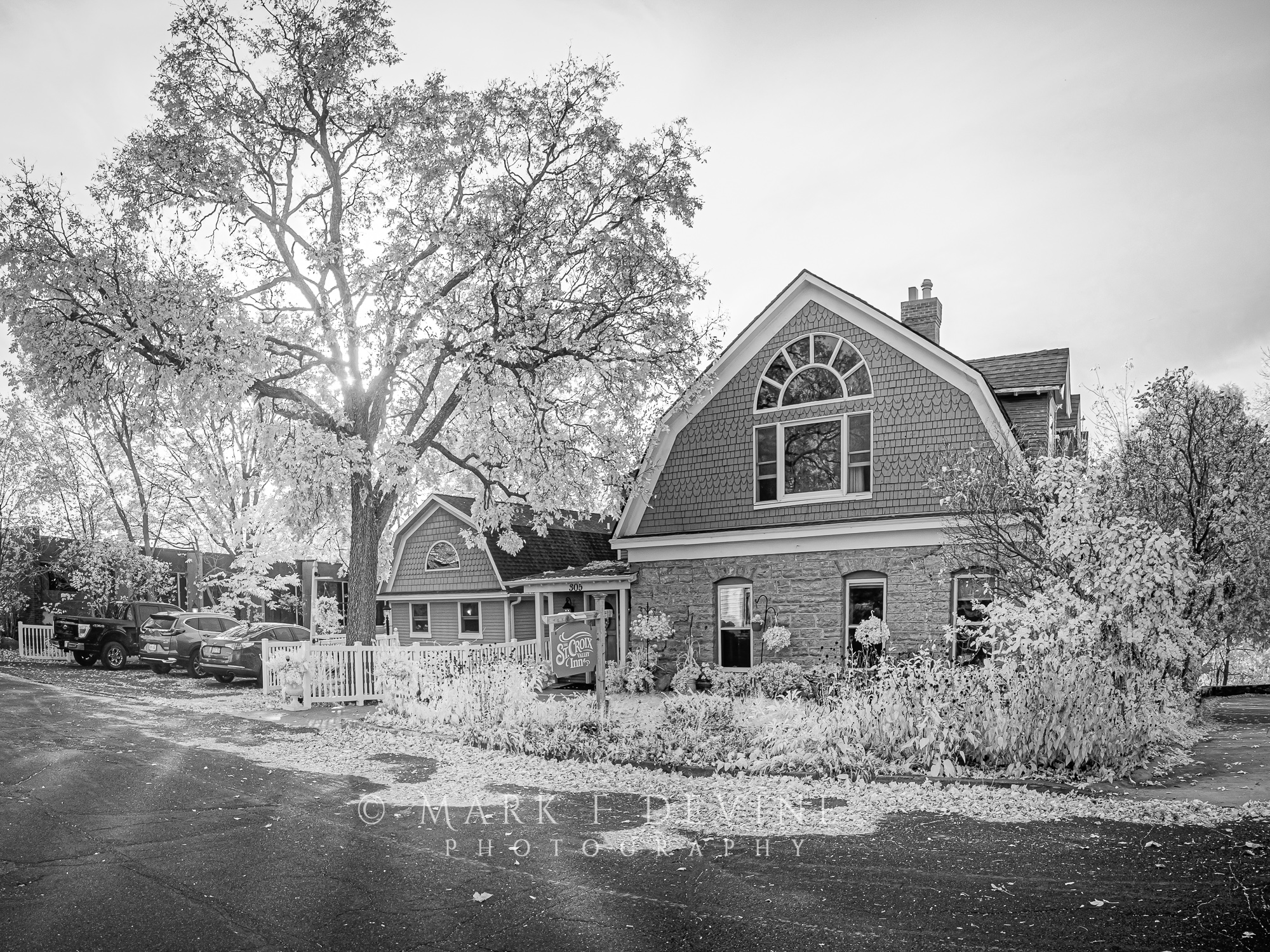2022 Retrospective: Infrared Art and Architecture #9
St. Croix Valley Inn in Osceola, Wisconsin. October 2022
Category: Infrared Art and Architecture

The Subject
We found this historic gem while hunting for a place to stay during a long weekend of family celebration and hiking last October. Originally constructed a private residence in 1908 from hand-quarried limestone, it was converted to a hotel in 1980. Situated on a bluff overlooking the St. Croix River, the views from the large patio and balconies facing the river are wonderful, especially in autumn.
Located near the heart of Osceola, the inn is a very convenient walk to some great dining and shopping. Breakfast at the St. Croix Inn is superb. For dinner we heartily recommend The Watershed Cafe. (No remuneration or exchange of services for these endorsements.)
The Composition
I tried a number of compositions showing the front of the property framed by the large tree near the entrance and the late autumn foliage. I normally try to avoid shooting into the sun when doing infrared, but the way the late afternoon light was filtering through the tree showed some promise, so I did a series of images hoping to catch some interesting patterns. For this image, I could not back up far enough to compose the scene in one fame, so I decided to do sets of exposures in portrait mode, hoping to combine them into an interesting high dynamic range panoramic image.
The autumn colors in the gardens around the house were no longer vibrant to the naked eye, but the textures and patterns from the plants and leaves in the street which are revealed in the infrared seemed like an echo of the riverbank and waterway on the other side of the inn. Or a moat if you will. The sunlight seems to ripple like waves across the asphalt. The inn seems to be nestled into the landscape.

Creating the Image
This particular weekend I deliberately packed ONLY my infrared camera gear. I was challenging myself to try and come away with some great images from a time (October) and place (St. Croix River valley) where I would normally be shooting color. I happily came away with a number of great infrared captures, and a great number that simply did not work. One of my favorite landscapes from 2022 was captured during this weekend, and will be listed in my top ten infrared landscapes.
In order to capture the full dynamic range and field of view for this scene, I shot a series of four exposure bracketed shots (4x3) and combined them into one HDR panoramic image in Lightroom. (see above) This image was then processed for noise reduction and selective sharpening using Topaz AI tools. This step was necessary in order to address some infrared light diffraction and odd noise in the image. Conversion to black and white, basic adjustments and some masking were done in Lightroom.
Infrared Image Capture and Processing: Lens Selections
Most cameras have an internal hot filter to eliminate unwanted effects caused by infrared light. The most obvious issue is something called a hot spot - brighter areas of the lens that may appear at different apertures or angles relative to the sun. If you are doing infrared photography with a converted camera (hot filter removed) and want to know about the characteristics of a various lenses, searching the net for "infrared lens database" will yield a good deal of useful information.

A Bonus Image from that Weekend
We came across some international students who were experiencing rock climbing for the first time at Interstate State Park in Minnesota that weekend. They were having a great time climbing, and were very happy to let me capture a bit of their fun. Three sets of three bracketed captures were used to create this image.

